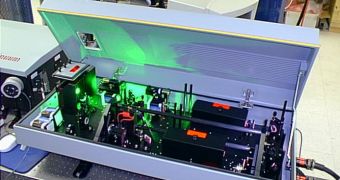Chemical attacks of a terrorist nature, aimed against the civilian population, are among the most dastardly and effective means of causing the desired effect on a target. British authorities managed to avoid an attack of major proportions in 2004, when they arrested Dhiren Barot, UK citizen of Indian descent. The man planned to bomb a number of targets, including the London subway, the New York Stock Exchange, the headquarters of the International Monetary Fund, and others. The mischief didn't materialize, but there's no reason to believe this will not happen in the future. As part of its strategy to reduce resulting damage, the US Department of Homeland Defense (DHS) funds new research in clean-up technologies.
The reason why this type of attacks is so powerful is because several hours may pass before any sign of them is detected. During these critical hours, people passing through an area may become infected with a viral strain, and then carry it across town, or around the world. Chemicals attacks also leave buildings contaminated for extensive periods of time. This happens because most of the surfaces are made of concrete, cement and brick. These surfaces are highly-porous, and chemical agents penetrate deep within. They become embedded afterwards, and are notoriously difficult to remove entirely.
The DOE Science and Technology Directorate (S&T) recognized the importance of developing methods of removing these chemicals fast and efficiently, and so they commissioned a study with experts at the US Department of Energy's (DOE) Idaho National Laboratory (INL). The scientists here managed to come up with an interesting solution to the problem. They propose that using lasers could help emergency responders get rid of dangerous chemicals safely and efficiently. The INL team was the natural choice, as experts here have been studying decontamination procedures for more than 10 years. In addition to experimental nuclear reactors, the lab also hosts a great deal of national security research.
“Lasers could help to scrub chemical-contaminated buildings clean and become a tool in the toolbox to speed a facility's return to normal operations,” explains the S&T Chemical and Biological Division Program Manager, Donald Bansleben. He explains that the secret to the new approach is water. Rather then using chemical dispersant to eliminate the danger, the INL team uses a combination of water and neodymium-YAG lasers.
The liquid penetrates deep within the material, and then lasers are used to vaporize it. As this happens, the dangerous chemicals are brought to the surface as well, where they can be handled through other, less-invasive methods. “It's a kind of laser Steam-cleaning,” explains Bob Fox, a chemist at the INL. “The lasers are showing neutralization of the agent without generation of dangerous byproducts,” he concludes.

 14 DAY TRIAL //
14 DAY TRIAL //